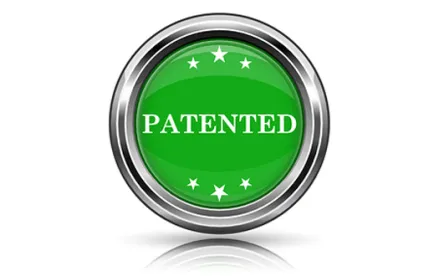In its Final Written Decision, the Board granted Patent Owner’s Motion to Amend to the extent it requested cancellation of claims 1, 2, 4, 11, 12, 17, 18, and 19 of the ’346 Patent, denied Patent Owner’s Motion to Amend to the extent it requested entry of substitute claims 20-26, and dismissed as moot both parties’ Motions to Exclude Evidence. The ’346 Patent relates to DNA sequencing using nucleotides that are labeled and blocked.
The Board first acknowledged that Patent Owner did not file a response following the Decision to Institute review of claims 1, 2, 4, 11, 12, 17, 18, and 19, but instead filed a Motion to Amend requesting cancellation of those claims and proposing substitute claims 20-26. The Board granted the Motion to Amend to the extent it requested cancellation.
Turning then to the patentability of the proposed substitute claims, the Board first addressed claim construction, stating that the claims will be construed according to the broadest reasonable interpretation in view of the specification. The Board first construed the term “the cleavable linker and the protecting group are cleavable under identical conditions,” noting that the limitation is similar to those present in the original claim 1, which were construed in the Decision to Institute. The Board also construed “cleavable linker contains a disulfide linkage,” stating that a disulfide linkage contains a bond between two sulfur atoms.
The Board then examined Patent Owner’s burden to show nonobviousness. The Board stated that the issue here is whether it would have been nonobvious at the time of the invention to have attached a detectable label to a base using a disulfide linkage, where the base is present in a nucleotide having “ribose or deoxyribose sugar moiety compris[ing] a protecting group attached via the 3’ oxygen atom” and where the disulfide linkage and the protecting group are removed “under a single set of chemical cleavage conditions.” The Board then summarized some of the prior art of record that was known at the time of the invention claimed in the ’346 Patent, noting that while the publications upon which the review was instituted do not disclose the feature, a disulfide bond as a linker is described in other prior art. Specifically, the Board found that Rabini and Church would have given one skilled in the art reason to have used a cleavable linker with a disulfide bond to ensure that the labeling moieties on the nucleotides will not interfere with the action of a polymerase enzyme during the synthesis reaction.
The Board then turned to Patent Owner’s argument that 90% efficiency in the cleavage reaction is required by the claims and could not be achieved at the time of the invention if a disulfide linkage were used. The Board found this argument flawed, noting that the proposed substitute claims do not require this limitation and that the testimony of Patent Owner’s expert concedes this point. Further, the Board noted that even if this limitation was necessary, Patent Owner did not provide adequate evidence that one skilled in the art would have been unable to choose conditions and linkages that would have achieved this limitation, noting that this conclusion is supported by the prior art of record.
Next, the Board reviewed objective evidence of nonobviousness. Specifically, Patent Owner provided a declaration by its Director of Consumables Product Development describing sequencing experiments performed under his supervision while employed by Patent Owner showing an unexpected improvement over the prior art. The Board noted that to show unexpected results, the claimed subject matter must be compared with the closest prior art, but Patent Owner did not state what references are the closest prior art to the claims. Further, the Board noted differences between the experiments described in the declaration and the ones described in the prior art.
Finally, the Board addressed both parties’ Motions to Exclude. Because the Board did not rely upon any of the evidence subject to those motions, they were dismissed as moot.
Intelligent Bio-Systems, Inc. v. Illumina Cambridge Limited, IPR2013-00266
Paper 73: Final Written Decision
Dated: October 28, 2014
Patent: 8,158,346 B2
Before: Lora M. Green, Scott E. Kamholz, and Christopher L. Crumbley
Written by: Crumbley
Related Proceeding: Trustees of Columbia University in the City of New York v. Illumina, Inc., No. 1:12-cv-00376-GMS (D. Del.)



 />i
/>i

